
Ayacucho: The Heart of Andean Culture
Discover Ayacucho: A City of Churches, Festivals, and Andean Splendor in the Heart of Peru.
Ayacucho, nestled in the highlands of Peru, is a city that pulses with history, culture, and the vibrancy of the Andes. Known for its 33 churches, one for each year of Jesus' life, Ayacucho is often referred to as the 'City of Churches'. These historic buildings are a testament to the city's rich colonial past and offer a unique glimpse into its architectural splendor. Beyond its religious landmarks, Ayacucho is famed for its colorful festivals, particularly Semana Santa, or Holy Week, which is considered one of the most important religious celebrations in Peru. During this time, the city comes alive with processions, traditional music, and dance, offering visitors an unforgettable cultural experience. The city's location also makes it a great base for exploring the surrounding natural beauty. Nearby, you can find the Wari ruins, remnants of a pre-Incan civilization, and the stunning landscapes of the Pampa Galeras National Reserve, home to the vicuña, a relative of the llama. Ayacucho's vibrant markets, where you can find intricate handicrafts and traditional textiles, provide a perfect opportunity to take a piece of this remarkable city home with you.
Local tips in Ayacucho
- Visit during Semana Santa for a truly unique cultural experience.
- Explore the Wari ruins to learn about Peru's pre-Incan history.
- Check out the local markets for traditional handicrafts and textiles.
- Don't miss the chance to visit Pampa Galeras National Reserve.
- Try the local cuisine, especially the traditional dish Pachamanca.
Ayacucho: The Heart of Andean Culture
Ayacucho, nestled in the highlands of Peru, is a city that pulses with history, culture, and the vibrancy of the Andes. Known for its 33 churches, one for each year of Jesus' life, Ayacucho is often referred to as the 'City of Churches'. These historic buildings are a testament to the city's rich colonial past and offer a unique glimpse into its architectural splendor. Beyond its religious landmarks, Ayacucho is famed for its colorful festivals, particularly Semana Santa, or Holy Week, which is considered one of the most important religious celebrations in Peru. During this time, the city comes alive with processions, traditional music, and dance, offering visitors an unforgettable cultural experience. The city's location also makes it a great base for exploring the surrounding natural beauty. Nearby, you can find the Wari ruins, remnants of a pre-Incan civilization, and the stunning landscapes of the Pampa Galeras National Reserve, home to the vicuña, a relative of the llama. Ayacucho's vibrant markets, where you can find intricate handicrafts and traditional textiles, provide a perfect opportunity to take a piece of this remarkable city home with you.
When is the best time to go to Ayacucho?
Iconic landmarks you can’t miss
Plaza de Armas of Ayacucho
Immerse yourself in the vibrant culture and history at the Plaza de Armas of Ayacucho, a picturesque park surrounded by colonial charm.
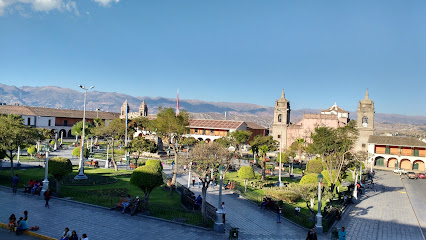
Pampa De La Quinua
Explore the historic Pampa De La Quinua, a vital site of Peru's independence, where history meets breathtaking landscapes and rich cultural heritage.
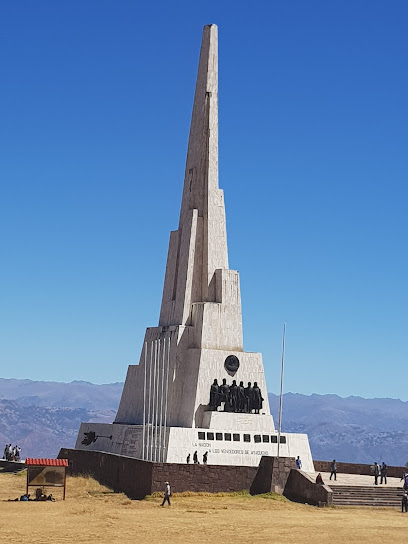
Mirador de Acuchimay
Discover the stunning panoramic views and rich cultural heritage at Mirador de Acuchimay in Ayacucho, Peru.
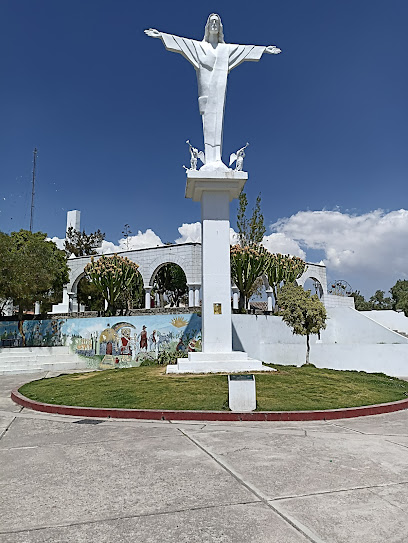
Museo de Sitio Wari
Explore the archaeological marvels of Museo de Sitio Wari, where the rich history of the ancient Wari civilization comes alive in stunning exhibits.
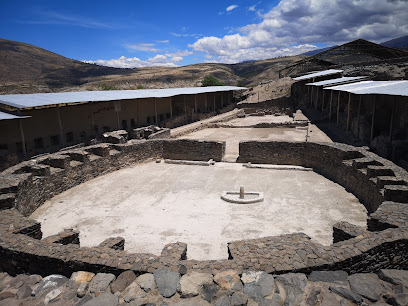
Arco del Triunfó
Discover the Arco del Triunfó, a symbol of Ayacucho's rich history and culture, and enjoy the vibrant atmosphere surrounding this iconic monument.
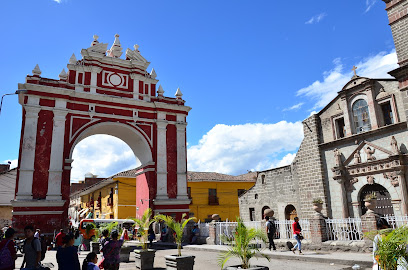
Aguas de Huancaraylla
Explore the soothing hot springs and breathtaking landscapes of Aguas de Huancaraylla, a hidden gem in Peru's natural beauty.
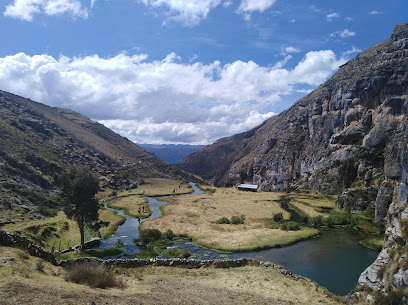
Museo de la Memoria
Discover the profound history of Peru at Museo de la Memoria, where stories of resilience and remembrance come to life in Ayacucho.
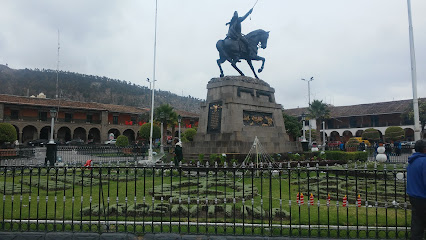
El Calvario
Discover tranquility and culture at El Calvario, a beautiful park in Ayacucho, perfect for relaxation and exploration.
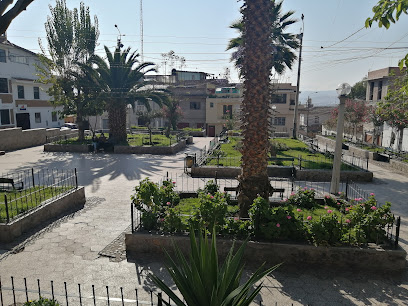
Ayacucho Cathedral
Explore the stunning Ayacucho Cathedral, a cultural gem showcasing colonial architecture and rich history in the heart of Peru.

Hipolito Unanue Museum
Explore the cultural heritage of Peru at the Hipolito Unanue Museum, where history and art intertwine in a captivating setting.
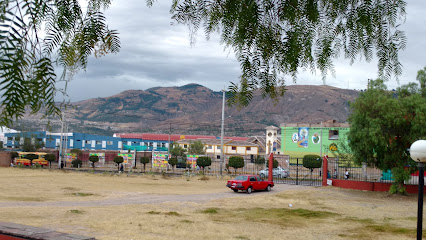
Casa Museo Joaquín López Antay
Explore the rich handicraft traditions of Ayacucho at Casa Museo Joaquín López Antay, a cultural gem showcasing vibrant Peruvian artistry.
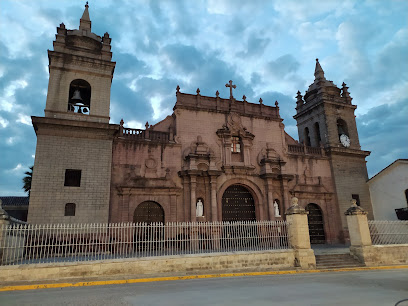
MUSEO CASA DEL RETABLO
Experience the captivating world of Peruvian craftsmanship at the Museo Casa del Retablo in Ayacucho, where art and culture intertwine beautifully.
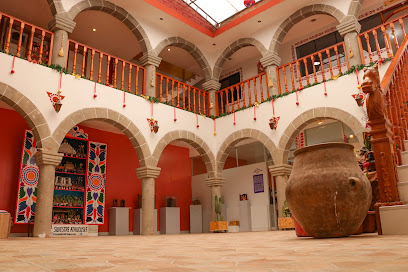
Catarata Pumapaqcha
Explore the breathtaking Catarata Pumapaqcha in Cangallo, a hidden waterfall gem surrounded by lush landscapes, perfect for nature lovers and adventure seekers.
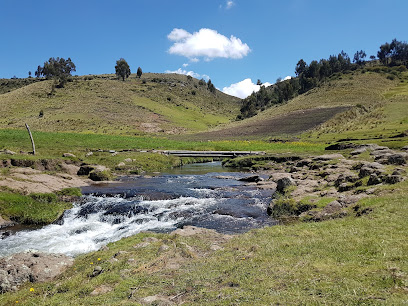
Aguas Turquesas Millpu
Experience the enchanting turquoise waters and breathtaking landscapes of Aguas Turquesas Millpu, a must-visit natural attraction in Peru.
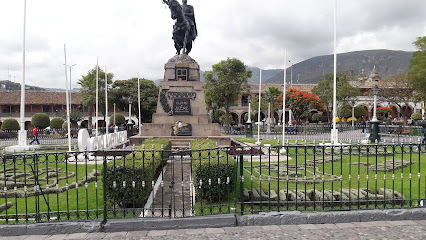
Catarata Batán
Experience the breathtaking beauty of Catarata Batán, an enchanting waterfall in Cangallo, surrounded by lush landscapes and rich biodiversity.

Unmissable attractions to see
Plaza de Armas of Ayacucho
Experience the vibrant culture and rich history of Andahuaylas at the breathtaking Plaza de Armas, the heart of this charming city.
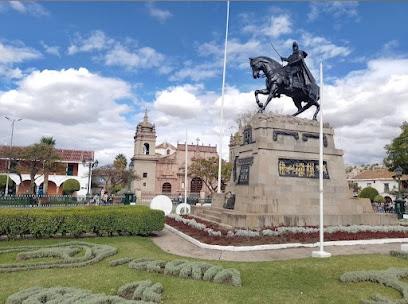
Museo de Sitio Wari
Explore the Museo de Sitio Wari, an archaeological gem in Peru, showcasing the rich heritage of the ancient Wari civilization through fascinating artifacts and exhibits.
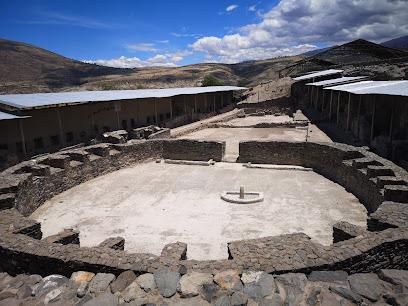
Arco del Triunfó
Explore the Arco del Triunfo in Ayacucho, a magnificent monument symbolizing Peru's historical triumph and a picturesque spot for travelers.
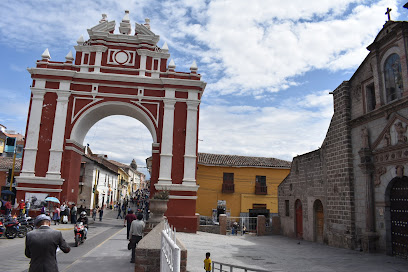
Museo de la Memoria
Explore the profound history of Peru at Museo de la Memoria, a museum dedicated to the memories of those affected by political violence.
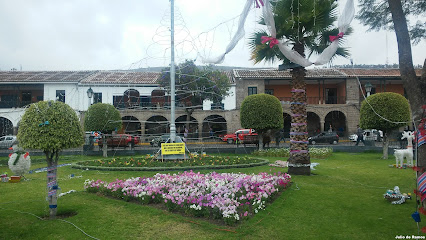
El Calvario
Discover the tranquil beauty and rich culture of El Calvario, a serene park and tourist attraction in Ayacucho, perfect for relaxation and exploration.
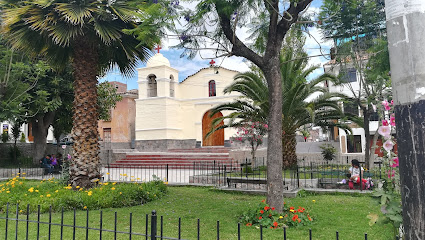
Ayacucho Cathedral
Explore the breathtaking Ayacucho Cathedral, a stunning blend of colonial architecture and spiritual heritage in the heart of Ayacucho.
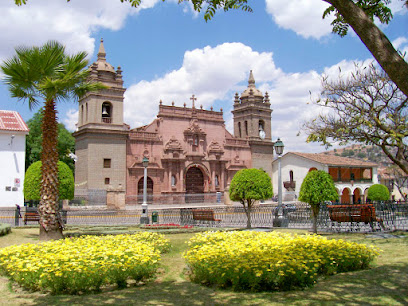
Hipolito Unanue Museum
Unveil the treasures of Peru's history at the Hipolito Unanue Museum in Ayacucho, where culture and heritage come alive.

Casa Museo Joaquín López Antay
Explore the vibrant artistic heritage of Ayacucho at Casa Museo Joaquín López Antay, where tradition meets craftsmanship.
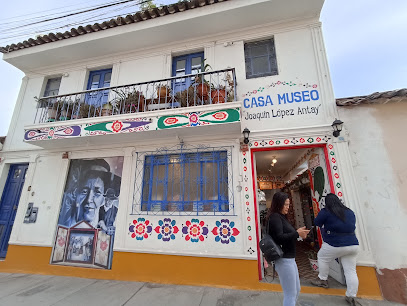
Catarata Pumapaqcha
Explore the breathtaking beauty of Catarata Pumapaqcha, a stunning waterfall in Cangallo, Peru, perfect for nature lovers and adventure seekers alike.
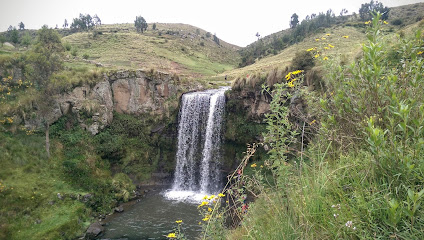
MARISCAL CÁCERES PARK
Experience the beauty and tranquility of Mariscal Cáceres Park in Ayacucho, a perfect retreat for relaxation and cultural exploration.

Cañones de Qorihuilca
Explore the stunning landscapes of Cañones de Qorihuilca in Ayacucho, Peru, a breathtaking natural attraction for adventure and nature enthusiasts.
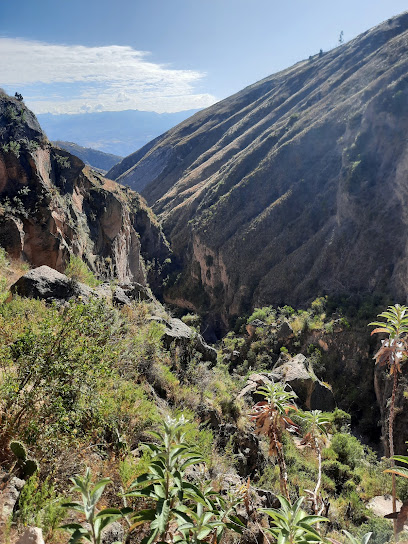
Huancaraylla Tours Perú
Explore Ayacucho's rich culture and stunning landscapes with Huancaraylla Tours, your gateway to unforgettable experiences in Peru.

Taller De Esculturas En Piedra De Huamanga- Julio Gálvez
Explore the artistry and cultural heritage of Ayacucho at Taller De Esculturas En Piedra De Huamanga, a gem of stone sculptures and local craftsmanship.
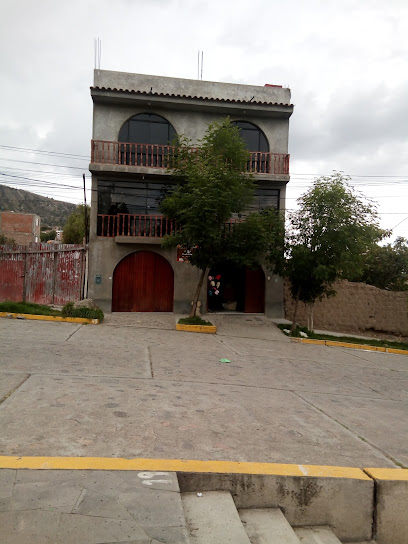
Bosque de Piedras de Huaraca
Discover the stunning beauty of Bosque de Piedras de Huaraca, a remarkable landscape of towering stone formations in Ayacucho, Peru.
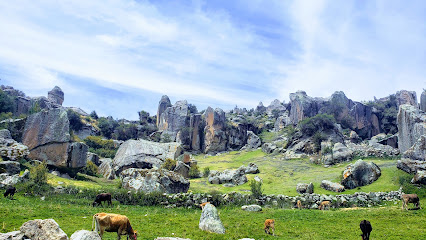
Complejo Arqueológico Wari
Discover the ancient ruins of Complejo Arqueológico Wari, a UNESCO World Heritage site that showcases Peru's rich pre-Columbian history and stunning architecture.
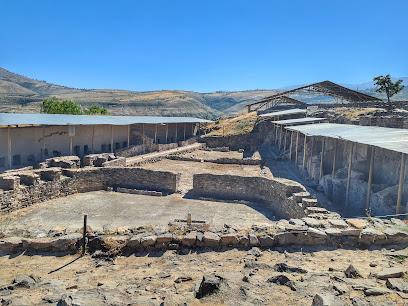
Essential places to dine
ViaVia Cafe Ayacucho
Experience culinary delight at ViaVia Cafe Ayacucho - where local flavors meet international cuisine in a cozy setting.
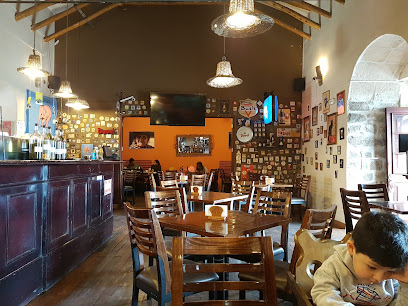
Restaurante Las Flores
Discover the authentic taste of Peru at Restaurante Las Flores in Ayacucho - where tradition meets flavor.

El Nino
Experience the rich flavors of Peru at El Niño, where traditional dishes meet local ingredients in a warm and inviting atmosphere.
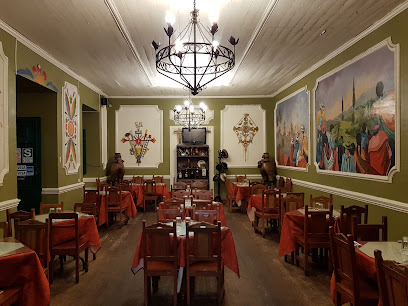
Sukre Restaurant Ayacucho
Experience authentic Peruvian cuisine at Sukre Restaurant Ayacucho - where tradition meets flavor in every dish.
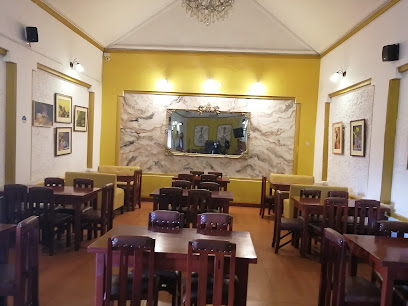
Retablo - pollos a la brasa
Experience authentic Peruvian flavors at Retablo - pollos a la brasa in Ayacucho, known for its delicious rotisserie chicken and warm hospitality.
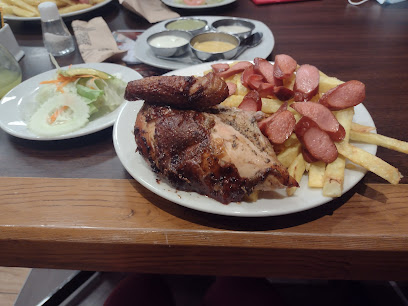
La Huamanguina
Discover authentic Peruvian flavors at La Huamanguina in Ayacucho - where every dish tells a story.
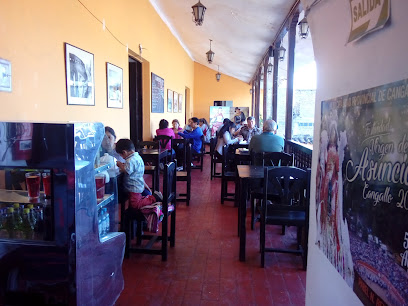
Las Tinajas
Discover Las Tinajas: A Culinary Gem in Ayacucho Offering Authentic Peruvian Cuisine in a Warm Atmosphere.
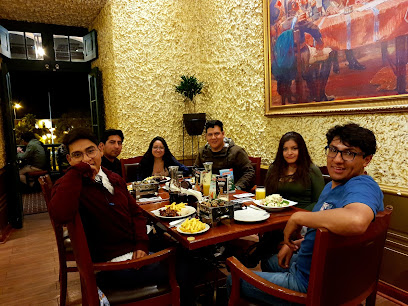
Magia Negra Taberna Trattoria
Discover Magia Negra Taberna Trattoria: A delightful blend of pizza and craft beer in Ayacucho's vibrant atmosphere.
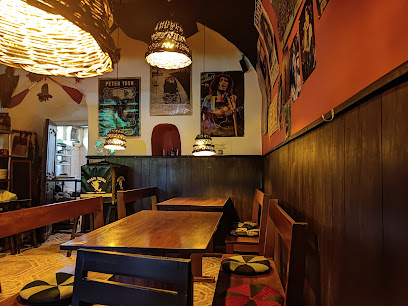
Mestizo
Discover Mestizo in Ayacucho: A perfect blend of traditional Peruvian flavors and artistic ambiance.

Wambar. Pollos a la leña
Experience authentic Peruvian cuisine at Wambar, where flavorful wood-fired chicken meets warm hospitality in the heart of Ayacucho.
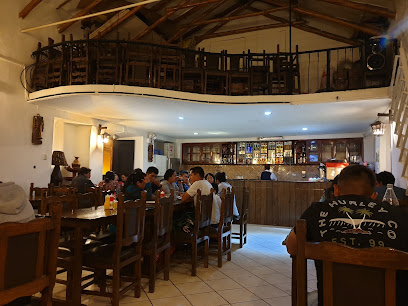
Koi - Sushi
Discover authentic Japanese flavors at Koi - Sushi in Ayacucho, where fresh ingredients meet culinary expertise for an unforgettable dining experience.
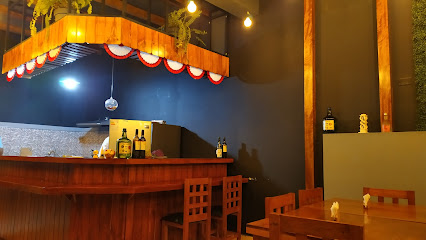
Aroma's Café & Crepes
Experience delicious crepes and inviting ambiance at Aroma's Café & Crepes in Ayacucho – where every bite is a delight!
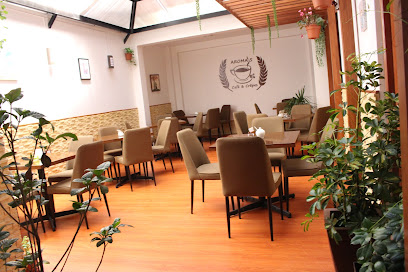
Leña & Carbón
Experience authentic Peruvian flavors at Leña & Carbón in Ayacucho - where traditional cooking meets vibrant culture.
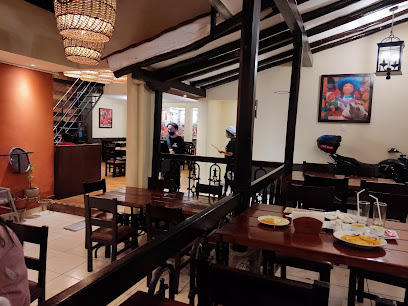
Restaurant Turistico El Retablo
Experience authentic Peruvian cuisine at Restaurant Turistico El Retablo in Ayacucho - A must-visit for food lovers exploring Peru's vibrant culture.
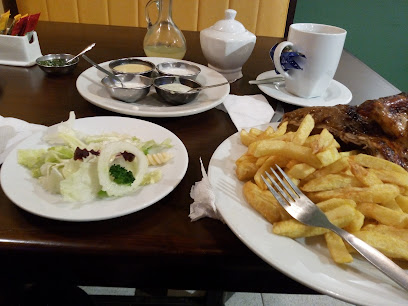
Fuziones Restaurante
Discover exquisite Peruvian cuisine at Fuziones Restaurante in Ayacucho – where tradition meets innovation in every bite.
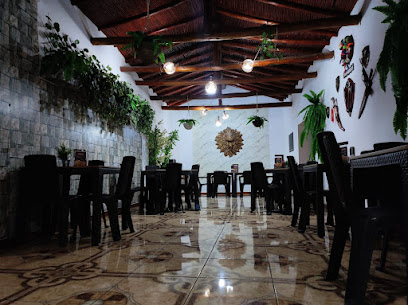
Markets, malls and hidden boutiques
Centro Artesanal Shosaku Nagase
Explore the vibrant artistry of Peru at Centro Artesanal Shosaku Nagase, your destination for unique crafts and cultural treasures in Ayacucho.
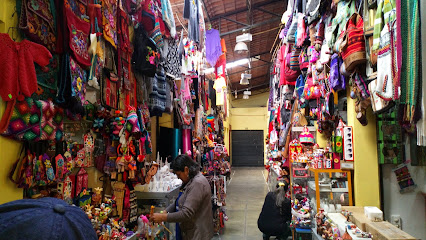
Edzalí Regalos
Discover Edzalí Regalos in Ayacucho, where unique Peruvian gifts and souvenirs await to enrich your travel experience.
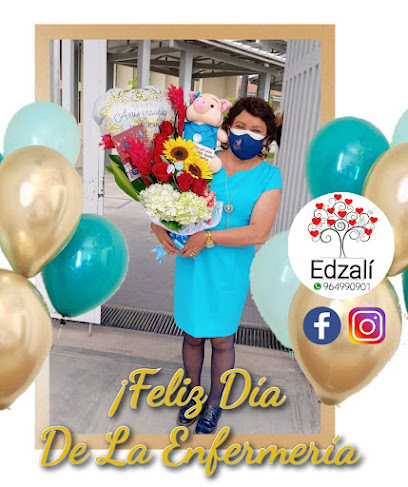
PARIS ELEGANCE BOUTIQUE - AYACUCHO
Discover the charm of Ayacucho at Paris Elegance Boutique, where unique women's fashion, stunning jewelry, and stylish shoes await your exploration.

Tienda Avalanch Ayacucho III
Explore the vibrant world of Peruvian fashion at Tienda Avalanch Ayacucho III, where traditional meets modern in an unforgettable shopping experience.

Galeria 5 continentes
Explore the vibrant clothing scene at Galeria 5 Continentes, a treasure trove of unique Peruvian fashion in the heart of Ayacucho.
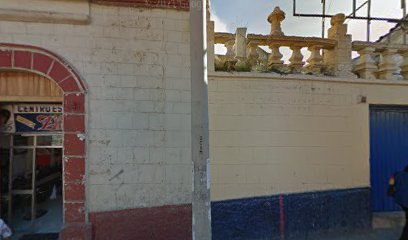
Artesanías Textiles Ayacucho
Explore the vibrant world of Peruvian textiles at Artesanías Textiles Ayacucho – a treasure trove of handcrafted artistry and cultural heritage.
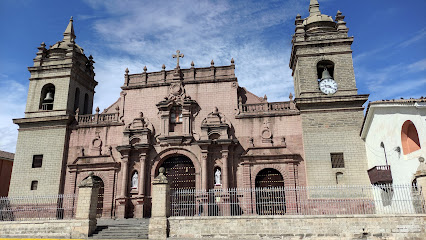
Para Ellas Boutique Ayacucho
Explore the essence of Peruvian fashion at Para Ellas Boutique in Ayacucho, where style meets local craftsmanship.

Regalos Kusi Kuyay
Discover the essence of local culture at Regalos Kusi Kuyay, a gift shop offering unique handcrafted treasures that capture the spirit of the region.
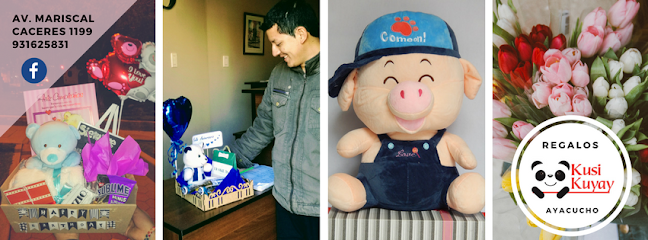
Daela
Explore Daela in Ayacucho for a unique shopping experience filled with handcrafted gifts and local treasures that embody Peruvian culture.
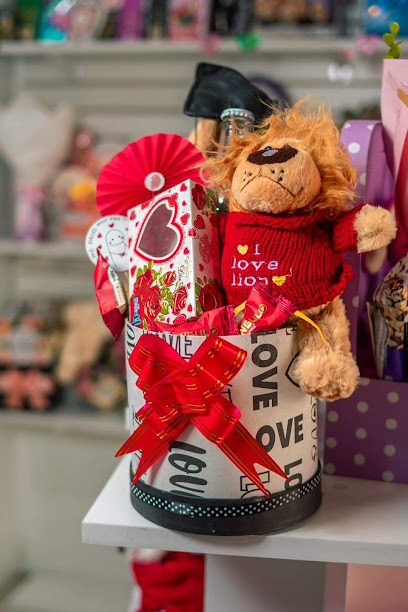
LIA'S BOUTIQUE
Explore the charm of Lia's Boutique in Ayacucho, where local fashion meets unique style in a vibrant shopping experience.

Tienda El
Discover exquisite formal wear and embrace the elegance of Peruvian fashion at Tienda El in the heart of Ayacucho.
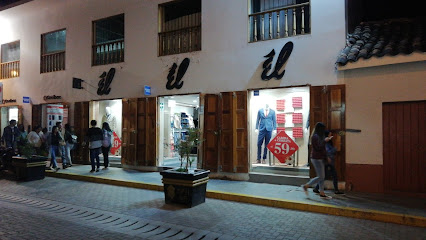
Moxie - Ropa y Accesorios
Explore Moxie in Ayacucho for the latest in women's fashion reflecting local craftsmanship and contemporary styles.

A Granel Market
Explore the authentic flavors of Peru at A Granel Market, a vibrant grocery store in Ayacucho offering fresh produce and local delicacies.
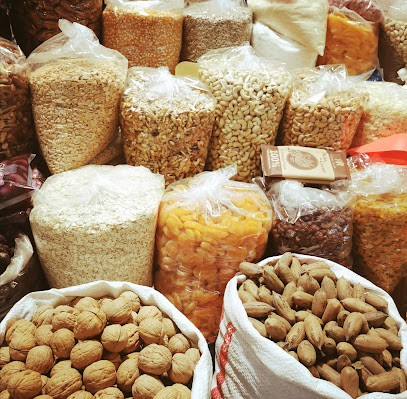
Tienda Virtual Ayacucho
Explore the vibrant local crafts and unique products at Tienda Virtual Ayacucho, where culture and shopping blend seamlessly in the heart of Peru.

Boutique Andree
Explore the artistry of Ayacucho at Boutique Andree, where local handicrafts and fashion merge to create a unique shopping experience.
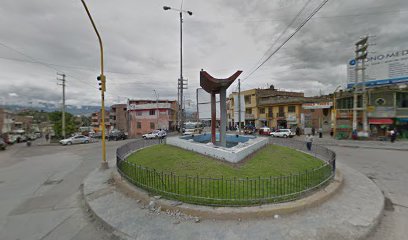
Essential bars & hidden hideouts
Taberna El Buho
Discover the vibrant spirit of Ayacucho at Taberna El Buho, a local bar with a lively atmosphere and authentic Peruvian drinks.
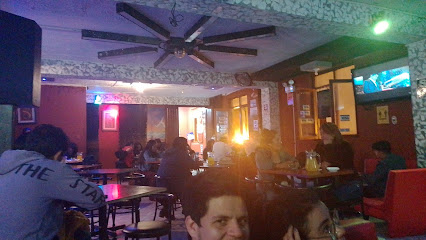
Restaurant Búnker Bar Ayacucho
Discover the vibrant nightlife at Búnker Bar Ayacucho, where great drinks and lively ambiance create unforgettable memories.
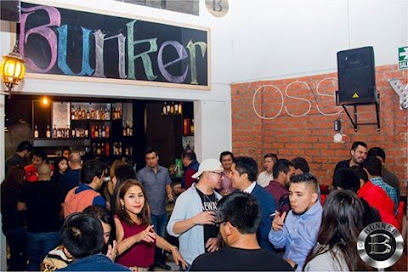
El Templo Bar & Cocina
Discover the vibrant flavors of Peru at El Templo Bar & Cocina in Ayacucho, where culinary delights and a lively atmosphere await.
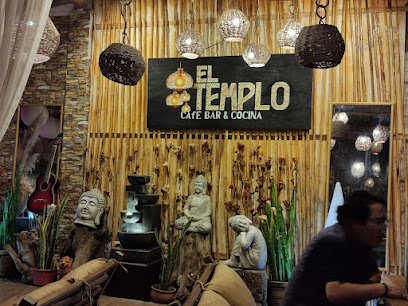
Pueblo Santo Restobar Lounge
Discover the lively ambiance and delicious flavors at Pueblo Santo Restobar Lounge in the heart of Ayacucho, where every night is a celebration.
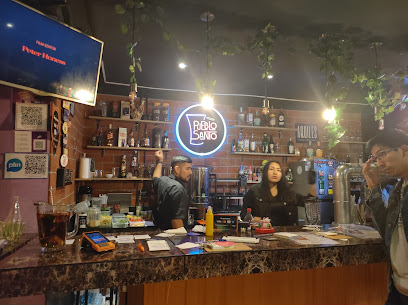
Madame Black Lounge
Experience the vibrant nightlife of Ayacucho at Madame Black Lounge, where exquisite drinks meet a cozy ambiance in a stylish setting.
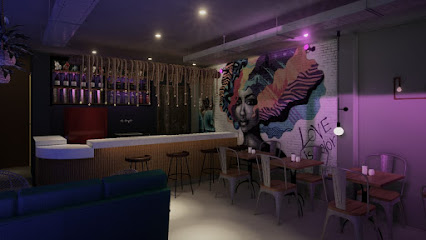
Music Road Cafe
Experience the vibrant nightlife of Ayacucho at Music Road Cafe, where local music meets a lively atmosphere and delicious drinks.
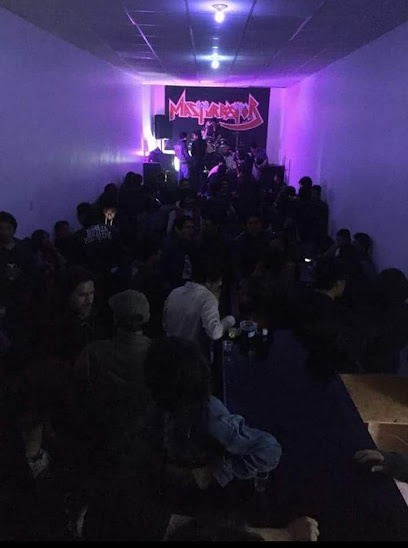
APACHE Café & Piqueos
Discover the culinary delights of APACHE Café & Piqueos, a vibrant gastropub in Ayacucho offering a unique blend of Peruvian flavors and modern cuisine.
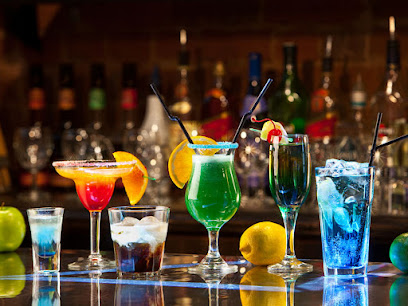
PACHAMAMA CAFE BAR
Experience the flavors of Ayacucho at Pachamama Cafe Bar, a vibrant gastropub blending local cuisine with contemporary dining.
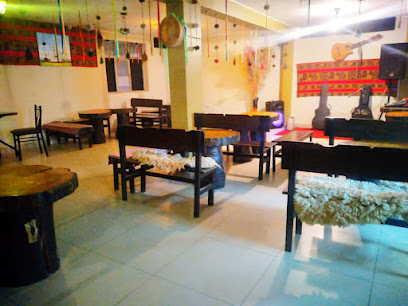
TUSUY
Discover TUSUY: A lively bar in Ayacucho where local culture meets vibrant nightlife, perfect for tourists seeking an authentic experience.
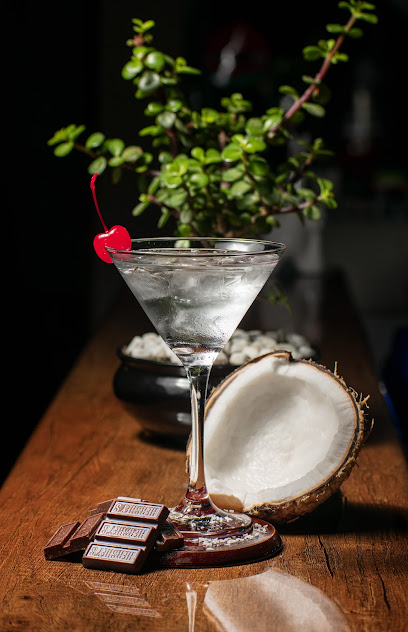
CULTURA
Discover the vibrant nightlife of Ayacucho at Cultura, a lively bar offering local drinks and a unique cultural experience.
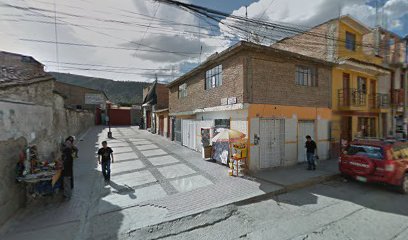
Kalua
Experience the vibrant nightlife of Ayacucho at Kalua, a cocktail bar offering innovative drinks and a lively atmosphere to enjoy with friends.

Vikingos Restobar
Discover the vibrant atmosphere of Vikingos Restobar in Ayacucho, where live music and local culture come together for an unforgettable night out.
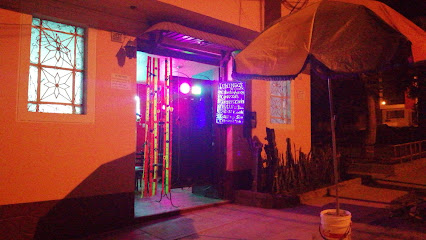
CocaRock Cafe - Bar
Experience the vibrant nightlife of Ayacucho at CocaRock Cafe, where local culture meets eclectic entertainment in a lively bar atmosphere.

Hukilao
Discover Hukilao, a charming gastropub in Ayacucho, where gourmet dining meets live piano music in an unforgettable atmosphere.
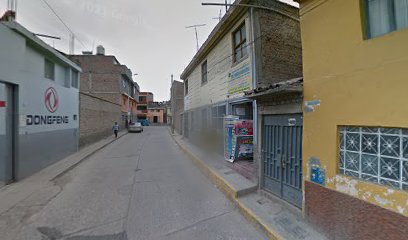
Maltas Beer Joint
Discover the vibrant spirit of Ayacucho at Maltas Beer Joint, where locals and travelers unite over craft beers and great conversations.
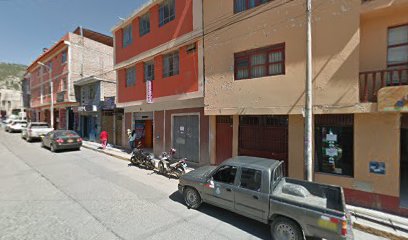
Travel experiences inspired by this city
Explore more travel diariesLocal Phrases
-
- HelloQ'allari
[kai-yar-ri] - GoodbyeAllinllachu
[ai-yin-yah-chu] - YesArí
[ah-ree] - NoMana
[mah-nah] - Please/You're welcomeP'as
[pas] - Thank youSulpayki
[sol-pai-ki] - Excuse me/SorryUma
[oo-mah] - How are you?Ima kashanki?
[ee-mah ka-shan-ki] - Fine. And you?Allillan. Ñoqanchik?
[ai-yin-yan. nyok-an-chik] - Do you speak English?Inglis simikuyki?
[ing-lees see-mee-kooi-ki] - I don't understandManam kani
[mah-nam ka-nee]
- HelloQ'allari
-
- I'd like to see the menu, pleaseMenuyta rimaykuykichu, p'as
[men-ooi-ta ree-mai-kooi-ki-chu, pas] - I don't eat meatKarne mana mikuy
[kar-nay mah-nah mee-kooi] - Cheers!¡Jallalla!
[jai-yai-yai] - I would like to pay, pleaseMayqanapura hatunaykichu, p'as
[mai-kan-a-poo-ra ha-too-nai-ki-chu, pas]
- I'd like to see the menu, pleaseMenuyta rimaykuykichu, p'as
-
- Help!¡Allillanchu!
[ai-yin-yahn-chu] - Go away!¡Ñukanchu!
[nyoo-kan-chu] - Call the Police!Llamanki polis
[yam-an-ki pol-ease] - Call a doctor!Llamanki tukuy?
[yam-an-ki too-kooi] - I'm lostWaqaqmi
[wak-ak-mi] - I'm illNiranki
[nee-ran-ki]
- Help!¡Allillanchu!
-
- I'd like to buy...Rikuchiykichu...
[ree-koo-chi-ki-chu] - I'm just lookingÑoqayku rimay
[nyo-ka-i-ku ree-mai] - How much is it?Imaqa chaymanchu?
[ee-ma-ka chai-man-chu] - That's too expensiveKaymi chaymanchu
[kai-mi chai-man-chu] - Can you lower the price?Chaymanchuta kachkanchikuyki?
[chai-man-chu-ta kach-kan-chi-koi-ki]
- I'd like to buy...Rikuchiykichu...
-
- What time is it?Ima kashan?
[ee-ma ka-shan] - It's one o'clockTukuy ñiqin
[too-kooi nyi-keen] - Half past (10)Iskay ñiqin puriq
[ees-kai nyi-keen poo-reek] - MorningP'unchay
[poon-chai] - AfternoonCh'askay
[chaskai] - EveningT'ikray
[tee-krai] - YesterdayInti punchaw
[een-tee poon-chow] - TodayKachun
[ka-choon] - TomorrowKutin
[koo-teen] - 1Huk
[hook] - 2Iskay
[ees-kai] - 3Kimsa
[keem-sah] - 4Tawa
[tah-wah] - 5Pichqa
[peech-ka] - 6Soqta
[sok-tah] - 7Qanchis
[kan-chees] - 8Pusaq
[poos-ak] - 9Isqun
[ees-koon] - 10Chunka
[choon-kah]
- What time is it?Ima kashan?
-
- Where's a/the...?Maypin...
[mai-pin] - What's the address?Maypin ñan?
[mai-pin nyahn] - Can you show me (on the map)?Mapata rimaykuykichu?
[mapa-ta ree-mai-kooi-ki-chu] - When's the next (bus)?Kay p'ishta?
[kai pees-ta] - A ticket (to ....)Kuchuy (kutin...)
[koo-choo-i (koo-teen)]
- Where's a/the...?Maypin...
History of Ayacucho
-
Ayacucho was once the heart of the Wari Empire, a pre-Incan civilization that thrived between 500 and 1000 AD. The Wari left behind impressive archaeological sites such as the Wari ruins, showcasing their advanced urban planning, architecture, and art. These ruins are located just 22 kilometers from Ayacucho and offer a glimpse into the sophisticated society that once controlled much of the Peruvian Andes.
-
The Spanish founded the city of Ayacucho on April 25, 1540, under the name 'San Juan de la Frontera de Huamanga.' The city's strategic location made it an important military and administrative center during the Spanish colonial period. The architecture from this era, including the 33 colonial churches and the grand Plaza de Armas, reflects the Spanish influence that still pervades the city.
-
On December 9, 1824, the Battle of Ayacucho was fought on the Pampa de la Quinua, a plain near the city. This decisive battle was a turning point in the South American wars of independence, leading to the liberation of Peru from Spanish rule. The victory of the independence forces under General Antonio José de Sucre ensured the future of independent Latin American republics and is commemorated by the Obelisk of La Quinua.
-
In the late 20th century, Ayacucho became a focal point of the Shining Path insurgency, a Maoist guerrilla movement. The conflict began in the early 1980s and resulted in widespread violence and human rights abuses. The period left a deep impact on the region, and today, Ayacucho is a place of remembrance and reconciliation, with several museums and memorials dedicated to the victims of the conflict.
-
Ayacucho is renowned for its rich cultural heritage, particularly its traditional crafts and vibrant festivals. The city is famous for its retablos, which are intricate, hand-crafted wooden boxes depicting religious or historical scenes. Ayacucho's Semana Santa (Holy Week) is one of the most spectacular in Peru, featuring elaborate religious processions, fireworks, and traditional music and dance. This blend of indigenous and colonial traditions makes Ayacucho a culturally unique and fascinating destination.
-
The city of Ayacucho boasts a remarkable collection of colonial architecture, earning it the nickname 'City of Churches.' The Cathedral Basilica of St. Mary, built in the 17th century, is a stunning example of Baroque architecture, featuring intricate stonework and a richly decorated interior. Other notable churches include Templo de Santo Domingo and Templo de la Compañía de Jesús, each with its unique architectural and historical significance.
Ayacucho Essentials
-
Ayacucho is located in the Peruvian Andes. The nearest airport is Coronel FAP Alfredo Mendívil Duarte Airport (AYP), which has regular flights from Lima. The flight from Lima to Ayacucho takes about an hour. Alternatively, you can reach Ayacucho by bus from Lima, which takes approximately 8-10 hours. Buses are available from various companies, offering differing levels of comfort.
-
Ayacucho is a relatively small city, and many attractions are within walking distance. For longer distances, you can use local taxis, which are affordable and readily available. Moto-taxis are another popular mode of transport for short trips within the city. Public buses are also available but may be less frequent and harder to navigate for tourists. Renting a car is an option but be prepared for mountainous terrain and narrow roads.
-
The official currency in Peru is the Peruvian Sol (PEN). Credit cards are accepted in most hotels, restaurants, and larger shops in Ayacucho. However, it is advisable to carry cash, especially when visiting smaller establishments or markets. ATMs are available throughout the city, but it is wise to withdraw sufficient cash beforehand if you're planning to travel to rural areas.
-
Ayacucho is generally safe for tourists, but it is advisable to take standard precautions. Avoid walking alone at night in unfamiliar areas, and keep an eye on your belongings in crowded places like markets and festivals. Some neighborhoods, such as the outskirts of the city, have higher crime rates and should be avoided, especially after dark. Always use registered taxis and avoid flagging down random vehicles.
-
In case of an emergency, dial 105 for police assistance and 116 for medical emergencies. The main hospital in Ayacucho is Hospital Regional de Ayacucho. It is recommended to have travel insurance that covers medical emergencies. For minor health issues, there are numerous pharmacies in the city where you can purchase over-the-counter medications.
-
Fashion: Do dress modestly, especially when visiting religious sites. Avoid wearing overly revealing clothing. Religion: Do respect local customs and traditions. Always ask for permission before taking photos in churches. Public Transport: Do be respectful and offer your seat to elderly passengers. Don’t eat or drink on public transport. Greetings: Do greet people with a handshake. A polite 'Buenos días' (Good morning) or 'Buenas tardes' (Good afternoon) is always appreciated. Eating & Drinking: Do try local delicacies and accept food offerings graciously. Don’t refuse hospitality, as it is considered impolite.
-
To experience Ayacucho like a local, visit the local markets such as Mercado Central where you can buy fresh produce and traditional Peruvian goods. Engage with locals, who are often friendly and willing to share stories about the city’s history and culture. Don’t miss the Semana Santa celebrations, which are among the most elaborate in Peru. For a unique experience, hike to the Wari ruins or visit the nearby town of Quinua, known for its traditional pottery.
Trending Landmark in Ayacucho
-
Plaza de Armas of Ayacucho
-
Pampa De La Quinua
-
Mirador de Acuchimay
-
Museo de Sitio Wari
-
Arco del Triunfó
-
Aguas de Huancaraylla
-
Museo de la Memoria
-
El Calvario
-
Ayacucho Cathedral
-
Hipolito Unanue Museum
-
Casa Museo Joaquín López Antay
-
MUSEO CASA DEL RETABLO
-
Catarata Pumapaqcha
-
Aguas Turquesas Millpu
-
Catarata Batán
Nearby Cities to Ayacucho
-
Things To Do in Huancayo
-
Things To Do in Machu Picchu
-
Things To Do in Ica
-
Things To Do in Cusco
-
Things To Do in Lima
-
Things To Do in Arequipa
-
Things To Do in Puno
-
Things To Do in Huaraz
-
Things To Do in Copacabana
-
Things To Do in Tacna
-
Things To Do in Arica
-
Things To Do in La Paz
-
Things To Do in Trujillo
-
Things To Do in Iquique
-
Things To Do in Chiclayo











